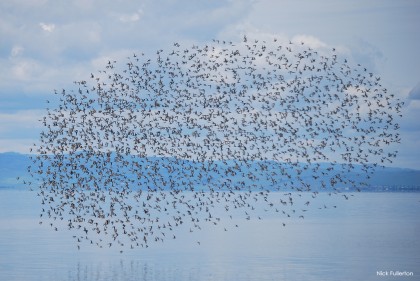
In 1909 Witmer Stone wrote in his book, The Birds of New Jersey, “From our shore the willet, piping and wilson’s plovers, oystercatcher, skimmer, avocet, stilt, and other species are gone forever as breeding birds, and are indeed for the most part rare even as stragglers. All crowded out by the summer population of our coast strip and doubtless by the careless gunning of these sumer visitors.”
Those were the worst of times. The United States was on the verge of finally regulating the killing and sale of wild birds. Stone mentions all the easy targets, the breeding coastal birds of the east coast. These birds were doomed to attempt to raise their young in places easy for people to access.
Fortunately Stone’s statement “gone forever” was an overly grim assessment. Due to regulation of both hunting and summer crowds (in bird nesting areas), we have willet, piping plover, oystercatcher, and skimmer back in New Jersey.
The disappearance and return of the willet in New Jersey is well documented. The last known breeding record for willets was the year 1884. A long stretch of time passed with ornithological reports on shorebird migration that revealed the rarity of migrating willets.
Charles Urner reported on shorebird migration in the journal The Auk from 1928 through 1938. He observed almost no willets during spring migration, but saw a steady trickle of willets in fall. We now know that these fall willets were probably western willets from the plains of the western U.S., a subspecies that wasn’t suffering as much from overhunting because of their vast, remote nesting area.
But in 1930, exciting news came from the Delaware Bay marshes of New Jersey. Julian Potter and others reported in The Auk that they saw willets with young! This was the first confirmed breeding willet in over 40 years.
The following year Charles Urner and colleagues returned to the Delaware Bay to conduct a broader 2-day survey of the region. They encountered “an unexpectedly large number of birds”. They estimated they saw at least 125 pairs and found two nests. Urner finishes his note, again published in The Auk, by writing that “old natives state that the colony has always existed in that section of the state”.
Come again?
From Urner’s report, it seems likely that willets were never really gone from New Jersey. They were just gone from all the easy-to-get-to spots. The marshes of the Delaware Bay are so vast and remote that willet probably always had a refuge there. Logistics and, according to Urner, “immense numbers of biting flies” made it more difficult for people to fully exterminate the population.
The last chapter of this saga occurred in 1941, when Julian Potter and N.J. McDonald returned to the Bay to attempt a population estimate of breeding willets. They developed a standardized approach that took advantage of the willet’s propensity to take to the air to defend nests and young. Once airborne and angry, the willets were counted. In their report in the journal Cassinia, the authors extrapolated that there are roughly 10,000 willet between the Cohansey and Maurice River.
The authors end by writing: “Doubtless this method of counting does have flaws. But at least it is a method of considerable merit. Is there a better method?”
To my knowledge, no one has since taken up this challenge.
One final footnote from a neighboring state New York. It seems that willet really were gone from New York and they did not return to breed there until the 1960’s. This was again reported in the Auk: